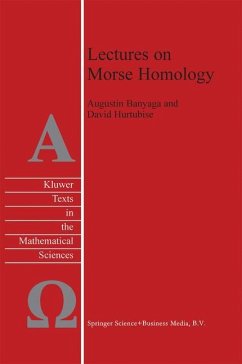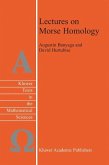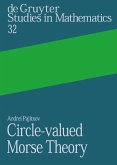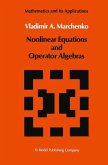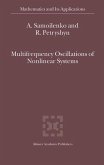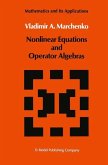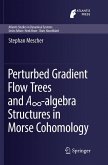This book is based on the lecture notes from a course we taught at Penn State University during the fall of 2002. The main goal of the course was to give a complete and detailed proof of the Morse Homology Theorem (Theo rem 7.4) at a level appropriate for second year graduate students. The course was designed for students who had a basic understanding of singular homol ogy, CW-complexes, applications of the existence and uniqueness theorem for O.D.E.s to vector fields on smooth Riemannian manifolds, and Sard's Theo rem. We would like to thank the following students for their participation in the course and their help proofreading early versions of this manuscript: James Barton, Shantanu Dave, Svetlana Krat, Viet-Trung Luu, and Chris Saunders. We would especially like to thank Chris Saunders for his dedication and en thusiasm concerning this project and the many helpful suggestions he made throughout the development of this text. We would also like to thank Bob Wells for sharing with us his extensive knowledge of CW-complexes, Morse theory, and singular homology. Chapters 3 and 6, in particular, benefited significantly from the many insightful conver sations we had with Bob Wells concerning a Morse function and its associated CW-complex.
From the reviews of the first edition:
"This book presents in great detail all the results one needs to prove the Morse homology theorem using classical techniques from algebraic topology and homotopy theory. ... This book collects all these results together into a single reference with complete and detailed proofs. ... With the stress on completeness and by its elementary approach to Morse homology, this book is suitable as a textbook for a graduate level course, or as a reference for working mathematicians and physicists."
(Bulletin Bibliographique, Vol. 51 (1-2), 2005)
"This book provides a treatment of finite-dimensional Morse theory and its associated chain complex, pitched at a level appropriate to early-stage graduate students. ... Throughout, the authors take pains to make the material accessible, and ... extensive references are provided. ... Many well-drawn figures are provided to clarify the text, and there are over 200 exercises, with hints for some of them in the back. ... Banyaga and Hurtubise's book provides a valuable service by introducing young mathematicians to a circle of ideas ... ."
(Michael J. Usher, Mathematical Reviews, Issue 2006 i)
"This book is an exposition of the 'classical' approach to finite dimensional Morse homology. ... This book presents in great detail all the results one needs to prove the Morse Homology theorem ... . References to the literature are provided throughout the book ... . A lot of examples, suggestive figures and diagrams in every chapter and many useful exercises at the end of the chapters makes this book a good and attractive textbook (as well as an excellent monograph). ... The bibliography is exhaustive."
(Ioan Pop, Zentralblatt MATH, Vol. 1080, 2006)
"This book presents in great detail all the results one needs to prove the Morse homology theorem using classical techniques from algebraic topology and homotopy theory. ... This book collects all these results together into a single reference with complete and detailed proofs. ... With the stress on completeness and by its elementary approach to Morse homology, this book is suitable as a textbook for a graduate level course, or as a reference for working mathematicians and physicists."
(Bulletin Bibliographique, Vol. 51 (1-2), 2005)
"This book provides a treatment of finite-dimensional Morse theory and its associated chain complex, pitched at a level appropriate to early-stage graduate students. ... Throughout, the authors take pains to make the material accessible, and ... extensive references are provided. ... Many well-drawn figures are provided to clarify the text, and there are over 200 exercises, with hints for some of them in the back. ... Banyaga and Hurtubise's book provides a valuable service by introducing young mathematicians to a circle of ideas ... ."
(Michael J. Usher, Mathematical Reviews, Issue 2006 i)
"This book is an exposition of the 'classical' approach to finite dimensional Morse homology. ... This book presents in great detail all the results one needs to prove the Morse Homology theorem ... . References to the literature are provided throughout the book ... . A lot of examples, suggestive figures and diagrams in every chapter and many useful exercises at the end of the chapters makes this book a good and attractive textbook (as well as an excellent monograph). ... The bibliography is exhaustive."
(Ioan Pop, Zentralblatt MATH, Vol. 1080, 2006)

